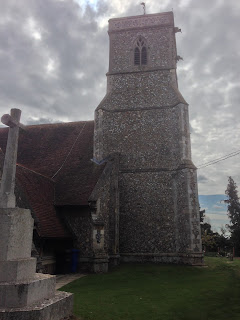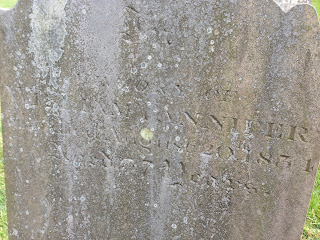Easter had been planned down to the hour. First was to hire the car, And we got upgraded to a Ford Focus. Nice car and good get up andgo.

But the first place to head was High Ongar. Why, because the Wood Family line came from their.
The description was "High Ongar, South of the parish down Mill Lane, towards Hallsford Bridge, there used to be a wood yard, a mill and brickworks. These have all gone, but the old brickwork site has been" So that was the target. Well we found Mill Lane, and the stream at Hallsford Bridge and the park.
And then to find the old Wood House, and it was till there as well.
Once we checked that out, we headed to Brantham, Suffolk.
We got there and the town have found that most of the town was new except for the Old church on Church Lane.
This old church was beautiful, we walked around the graveyard and as usual a lot of the stones we couldn't read.
But I found this one, William Pannifer died in 1831 aged 27. I have no record expect lots of William Pannifer's from Brantham. One day I'll find the record.
Then to the river Stour, This river use to be a major waterway, now it is pumped almost dry.
So then onto Bentley
Again another small town that has been replaced by Newer homes.
It was disappointing.
So we decided it was time to Flatford Mill, Home of John Constable.
We found the site and the viewpoints of where his paintings so off we went.
The paintings there were all prints, not good ones either.
The place was crowded and most of the houses were privately owned, locked up tight.
It was pleasant their.
The dry had been restored.
The site of the Haywren.
So after a disappointing visit. We decide to get a move on.
East Bergholt was the next place.
This we found more interesting.
St Mary the Virgin Chapel is very old and different design.
The doors were 400 years old.
The is no Bell Tower, only a Bell Cage.
The Big bells are rung every Sunday, we had heard them when we were at Flatford Mill.
The bells were very large heavy looking. when tapped they very solid. These ones were only 200 years old as the older ones were stolen in the early 1800's and sent to London.
After that we went to Hall Farm Shop just outside of Debham.
The Shop full of goods I could have spent a fortune.
End of Part one






























